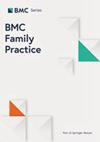从利益相关者的角度评估贫民窟地区公私合作初级保健扩展计划:定性研究
IF 3.2
3区 医学
Q1 MEDICINE, GENERAL & INTERNAL
引用次数: 0
摘要
如今,贫民窟健康的经济和社会决定因素已成为决策者关注的焦点。伊朗在初级卫生保健计划方面有着丰富的经验。本研究旨在从 2022 年利益相关者的角度,对伊朗贫民窟地区公私合作的初级卫生保健扩展计划进行评估。本定性研究采用框架内容分析法。参与者是通过滚雪球法有目的抽样选出的伊朗东部呼罗珊-拉扎维省医科大学参与 "公私合作初级卫生保健扩展计划 "郊区项目的 17 名专家和卫生管理人员。在数据收集方面,采用了半结构式访谈,并根据 SWOT 采用框架内容分析法进行数据分析和结果分类。研究确定了 23 个主主题和 112 个次主题,然后利用 SWOT 模型将其分为四大类--优势、劣势、机会和威胁。研究结果显示了影响郊区公私合作初级卫生保健扩展的内部和外部因素。这种形势分析有助于卫生决策者更好地了解卫生机构的绩效。本文章由计算机程序翻译,如有差异,请以英文原文为准。
Evaluation of the primary health care expansion program with public-private partnership in slum areas from the perspective of stakeholders: a qualitative study
Today, economic and social determinants of health in slum settlements are at the policymakers’ center of attention. Iran has had an excellent experience in the Primary Health Care Program. This study aimed to evaluate the Primary Health Care Expansion Program with public-private partnerships in slum areas of Iran from the perspective of stakeholders in 2022. This qualitative study was conducted using the framework content analysis method. Participants were 17 experts and health managers involved in The Primary Health Care Expansion with Public-Private Partnerships in the suburban areas at the medical universities of Khorasan Razavi province in the east of Iran, who were selected through purposive sampling via snowball method. For data collection, a semi-structured interview was done and framework content analysis was used for data analysis and results categories based on the SWOT. The study identified 23 main themes and 112 sub-themes, which were then grouped into four main categories - strengths, weaknesses, opportunities, and threats using the SWOT model. Results of the study showed the internal and external factors affecting Primary Health Care Expansion with Public-Private Partnerships in suburban areas. This situational analysis can help health policymakers to better understand the performance of health facilities.
求助全文
通过发布文献求助,成功后即可免费获取论文全文。
去求助
来源期刊

BMC Family Practice
医学-医学:内科
CiteScore
3.20
自引率
0.00%
发文量
0
审稿时长
4-8 weeks
期刊介绍:
BMC Family Practice is an open access, peer-reviewed journal that considers articles on all aspects of primary health care research. The journal has a special focus on clinical decision making and management, continuing professional education, service utilization, needs and demand, and the organization and delivery of primary care and care in the community.
 求助内容:
求助内容: 应助结果提醒方式:
应助结果提醒方式:


